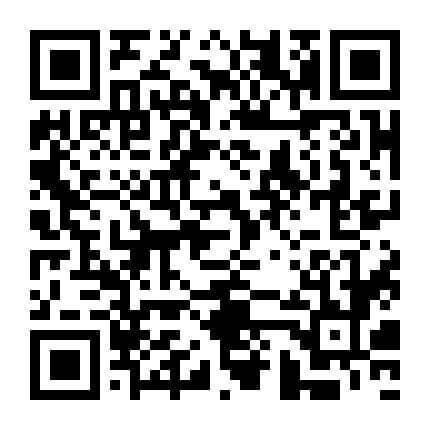2013年中国矿业大学考博英语真题
- 1
- 2
- 6
摘要:2013年中国矿业大学考博英语真题,更多关于考博英语的相关信息,请关注希赛网英语考试频道。
希赛网英语频道为同学们整理了中国矿业大学考博英语真题.请同学们多多复习.专心备考。
Passage 1
Questions 1 to 4 are based on the following passage.
“Your eyes are two pools that twinkle like stars in the sky. n These sweet things are traditionally best sent in feather-inked script on fine, perfumed parchment. Nowadays, though, more and more lovers are using e-mail or cell phone short message services (SMS) to say a few nice words to each other. The result: a new culture of love-letter writing has evolved and is rewriting the rules in how we express our love.
Make no mistake: in many cases the love e-mail messages significantly resemble their aromatic predecessors. The verbal imagery has hardly changed. SMS messages, however, have necessitated the development of a new, shorter form of love talk. Experts believe, in fact, that far more people now carry out sweet talk in cyberspace than in the time before e-mail and short messaging came along. When people communicate over e-mail or short messages, everything is much more relaxed, less serious, and this helps the sweet words flow. Nicola Doering, a media researcher at the Technical University of Ilmenau in Thueringen, Germany, emphasizes that for many people contact over e-mail or SMS is simpler: The language is a different one, here than in traditional letters; people tend to write more like they speak. ’’ This means that a message writer might not have to agonize over every word, as is often expected with traditional love letters. This is obviously encouraging for many people. For longer, particularly romantic love letters, e-mail writer also reach back into the language of poetry, “Your calf-blue eyes” is typical for the kind of phrasings found in e-mail love letters. At least one traditional symbol between lovers has made a striking comeback. Even in the love letters of the 19th century, one often found the letter X as a symbol of a kiss. Many paper love letters would have three Xs at the bottom as a closing. And this symbol is often used today between lovers in their e-mail messages.
In spite of all the technological advancement that e-mail represents, classic love letters on paper still have a special meaning, the experts say. Ink on paper simply affects many people more strongly than lines on a computer screen. It appears more serious, more binding, as if written for all eternity. Sometimes people want to have something to touch, a letter that you can really hold in your hand.
1. From this passage we learn that the love e-mail messages .
A. haven’t changed the convention in how people express love
B. are often sent on fine, perfumed parchment
C. represent a traditional culture o£ love-letter writing
D. are still like traditional letters in many cases
2. Three Xs used in lovers’ e-mail message symbolize .
A. a striking comeback
B. the language of poetry
C. three kisses
D. closing of the letters
3. It is implied that experts think classic love letters .
A. have stronger power to move the feelings
B. resemble lines on a computer screen
C. cannot be touched by modem people
D. exclude the technological advancement
4. The author’s tone in this passage is .
A. mocking B. objective
C. complimentary D. approving
Passage 2
Questions 5 to 8 are based on the following passage.
In recent years, there has been a steady assault on salt from the doctors: salt is bad for you —regardless of your health. Politicians also got on board: “There is a direct relationship,” US congressman Neal Smith noted, u between the amount of sodium a person consumes and heart disease, circulatory disorders, stroke and even early death. ”
Frightening, if true! But many doctors and medical researchers are now beginning to feel the salt scare has gone too far. “All this hue and cry about eating salt is unnecessary,” Dr. Dustan insists. “For most of us it probably doesn’t make much difference how much salt we eat. ” Dustan’s most recent short-term study of 150 people showed that those with normal blood pressure experienced no change at all when placed on an extremely low-salt diet, or later when salt was reintroduced. Of the hypertensive subjects, however, half of those on the low-salt diet did experience a drop in blood pres- sure ,which returned to its previous level when salt was reintroduced.
“An adequate to somewhat excessive salt intake has probably saved many more lives than it has cost in the general population” , notes Dr. John H. Laragh. “So a recommendation that the whole population should avoid salt makes no sense. ’’ Medical experts agree that everyone should practice reasonable “ moderation ” in salt consumption. For the average person, a moderate amount might run from four to ten grams a day, or roughly 1/2 to 1/3 of a teaspoon. The equivalent of one to two grams of this salt allowance would come from the natural sodium in food. The rest would be added in processing,preparation or at the table.
Those with kidney, liver or heart problems may have to limit dietary salt,if their doctor advises. But even the very vocal “low salt” exponent, Dr. Arthur Hull Hayes, Jr. admits that “we do not know whether increased sodium consumption causes hypertension. ’’ In fact,there is growing scientific evidence that other factors may be involved: deficiencies in calcium, potassium, perhaps magnesium ; obesity ( much more dangerous than sodium) ; genetic predisposition; stress. “It is not your enemy”,says Dr. Laragh. “Salt is the No. 1 natural component of all human tissue ,and the idea that you don’t need it is wrong. Unless your doctor has proven that you have a saltrelated health problem, there is no reason to give it up. ”
5. According to some doctors and politicians, the amount of salt consumed .
A. exhibits as an aggravating factor to people in poor health
B. cures diseases such as stroke and circulatory disorders
C. correlates highly with some diseases
D. is irrelevant to people suffering from heart disease
6. From Dr. Dustan’s study we can infer that .
A. a low-salt diet may be prescribed for some people
B. the amount of salt intake has nothing to do with one’s blood pressure
C. the reduction of salt intake can cure a hypertensive patient
D. an extremely low-salt diet makes no difference to anyone
7. In the third paragraph, Dr. Laragh implies that .
A. people should not be afraid of taking excessive salt
B. doctors should not advise people to avoid salt
C. an adequate to excessive salt intake is recommended for people in disease
D. excessive salt intake has claimed some victims in the general population
8. What is the main message of this text?
A. The salt scare is not justified.
B. The cause of hypertension is now understood.
C. The moderate use of salt is recommended.
D. Salt consumption is to be promoted.
Passage 3
Questions 9 to 12 are based on the following passage.
For the teenagers who cast off their daily lives and head off for South America, Africa and Asia, it may offer the time of their young lives. But research published yesterday shows that the so-called “ gap year” between school and university is not as beneficial as has been suggested. In five years the gap year has metamorphosed from a radical activity of a rebellious student generation into an obligation that must be fulfilled by ambitious future professionals. It has spawned in the process a lucrative commercial market providing tourist style trips.
Prince William’s gap year venture to Chile in 2000 created institutional acceptability, and about 200,000 people a year between 18 and 25 now take 12 months out of study. “No longer were gap years for rebels and dropouts and people with nothing better to do; now they were for hopeful professionals and future kings,n said Kate Simpson, from the school of geography at the University of Newcastle ,who based her research on projects in South America and talked to hundreds of students on their return.
“A gap year has become a requirement for success. It is now part of your progression to employability, as necessary as your A-levels and as inevitable as your degree. As the gap year has been professionalized, so it has increasingly been marketed at future professionals, with an assumption that further education and successful employment are to follow. "
Ms. Simpson said that without explaining how values such as “broad horizons” and “character building” are supposed to be achieved by gap years, they have been promoted by people such as the foreign secretary, Jack Straw, and the University College Admission Service ( Ucas). Mr. Straw said: “Our society can only benefit from travel which promotes character, confidence and decisionmaking skills. ’’ According to Ucas: “The benefits of a well-structured year out are now widely recognized by universities and colleges and cannot fail to stand you in good stead in later life. ”
However, these statements did not always reflect the reality. Many of the 50 organizations, providing package trips for gap year students this year designed them to be acceptable to parents and future employers, and had little concern for the communities the students were volunteering to help. One example was in Ecuador where students had been sent to “help the local community. ’’ The villagers returned home from work to discover their houses had been painted by the volunteers without prior consultation. “ Groups of 18-year-olds arrive somewhere with no skills and set about building a bridge or school often without proper consultation with the local community and what they might want or need. They get a level of experience and decision-making which they would not get at home, but also doing things in other people’s hospitals and schools they would never be allowed at home. " Gap students had been involved in delivering babies, construction projects and teaching without prior training ——something banned in Britain.
A typical provider advertised: “Are you looking for a travel adventure with a purpose, one that gives you experience beyond tourism and provides practical help to local communities. ” Its slogan was: “Develop people. Share cultures. Build futures. ” For Ms. Simpson, the industry “appears amateurish and outdated”. The idea seemed to be that ancient, highly civilized cultures could benefit from the introduction of large numbers of unskilled 18-year-olds. “While such an approach may produce some valuable contributions, the risks are high. The gap year industry cannot rely on its good intentions to assure the quality of its work. ’’
The projects are often used to the benefit of the visiting students, as opposed to the residents. In many projects, the students practice being adults and professionals using local people as guinea pigs. “ Projects did not have to be based on the exploitative and dehumanizing relationships. I am sure that many students learn a great deal from their gap years, but they could gain so much more if they experiment with local people. ” The best projects were those residents know in advance in which the local people participate and ask for what they want. “ If the students and locals work together to form friendships ,then the true potential of the gap year could be realized”,Ms. Simpson added.
9. According to the passage, which of the following is NOT true about the “gap year”?
A. It has met strong protest from local communities outside Britain.
B. It has been officially accepted by more universities.
C. It has been linked with students’ academic study and future employment.
D. It has been developed into a growing industry.
10. The expression “guinea pigs” in the sentence “In many projects, the students practice being adults and professionals using local people as guinea pigs. ’’ ( Para. 8 ) can be paraphrased as .
A. beasts and brutes
B. control groups in a study
C. subjects for experiments
D. dirty animals such as pigs
11. It can be concluded from the passage that according to Ms. Simpson, .
A. the gap year industry will undergo a greater development
B. the activities of gap students are hated by most local people
C. gap year activity should show more concern for locals as well
D. gap students have made great contribution to the local communities
12. Which of the following can serve as the best title of the passage?
A. Broad horizons and character building: targets fo» university students.
B. Requirement for success: gap year equals A-levels and academic degree.
C. The booming gap year industry: good intentions provide no guarantee.
D. Mind the gap: why student year out may do more harm than good.
Passage 4
Questions 13 to 16 are based on the following passage.
The danger of misinterpretation is greatest, of course, among speakers who, actually speak different native tongues, or come from different cultural backgrounds, because cultural difference necessarily implies different assumptions about natural and obvious ways to be polite. Anthropologist Thomas Kochman gives the example of a white office worker who appeared with a bandaged arm and felt rejected because her black fellow worker didn’t mention it. The doubly wounded worker assumed that her silent colleague didn’t notice or didn’t care. But the co-worker was purposely not calling attention to something her colleague might not want to talk about. She let her decide whether or not to mention it, being considerate by not imposing. Kochman says, based on his research ,that these differences reflect recognizable black and white styles.
An American woman visiting England was repeatedly offended — even, on bad days, enraged —— when the British ignored her in setting in which she thought they should pay attention. For example, she was sitting at a booth in a railway-station cafeteria. A couple began to settle into the opposite seat in the same booth. They unloaded their luggage; they laid their coats on the seat; he asked what she would like to eat and went off to get it; she slid into the booth facing the American. And throughout all this, they showed no sign of having noticed that someone was already sitting in the booth. When the British woman lit up a cigarette,the American had a concrete object for her anger. She began ostentatiously looking around for another table to move to. Of course there was none; that’s why the British couple had sat in her booth in the first place. The smoker immediately crushed out her cigarette and apologized. This showed that she had noticed that someone else was sitting in the booth, and that she was not inclined to disturb her. But then she went back to pretending the American wasn’t there, a ruse in which her husband collaborated when he returned with their food and they ate it.
To the American, politeness requires talk between strangers forced to share a booth in a cafeteria, if only a fleeting “Do you mind if I sit down?” or a conventional, “Is anyone sitting here?” even if it is obvious no one is. The omission of such talk seemed to her like dreadful rudeness. The American couldn’t see that another system of politeness was at work. By not acknowledging her presence, the British couple freed her from the obligation to acknowledge theirs. The American expected a show of involvement ; they were being polite by not imposing. An American man who had lived for years in Japan explained a similar politeness ethic. He lived, as many Japanese do, in extremely close quarters — a tiny room separated from neighboring rooms by paper-thin walls. In this case the walls were literally made of paper. In order to preserve privacy in this most unprivate situation, his Japanese neighbor with the door open, they steadfastly glued their gaze ahead as if they were alone in a desert. The American confessed to feeling what I believe most American would feel if a next-door neighbor passed within a few feet without acknowledging their presence — snubbed. But he realized that the intention was not rudeness by omitting to show involvement ,but politeness by not imposing.
The fate of the earth depends on cross-cultural communication. Nations must reach agreements, and agreements are made by individual representatives of nations sitting down and talking to each other —public analogues of private conversation. The processes are the same, and so are the pitfalls. Only the possible consequences are more extreme.
13. In Thomas Kochman’s example, when the white office worker appeared with a bandaged arm, why did her colleague keep silent?
A. Because she didn’t want to embarrass her white colleague.
B. Because she was considerate by imposing on her.
C. Because she didn’t care about her white colleague at all.
D. Because she was aware of their different cultural backgrounds.
14. What is the best definition for the word “imposing” in paragraph 2?
A. Acting in a grand, impressive way.
B. Using your authority to make sure a rule is kept.
C. Unreasonably expecting someone to do something.
D. Causing troubles to oneself.
15. Which of the following can be concluded from the passage?
A. The American enjoys being ignored in unfamiliar settings.
B. The American would like to be imposed in different settings.
C. The British expect a small talk between strangers who are forced to share a booth in a cafeteria
D. The British would like to avoid talking to strangers in public.
16. What seems to be ‘Japanese’ behavior in order to preserve privacy in close quarters?
A. They act as if they have never known someone living next to them.
B. They would separate their rooms by paper-thin walls.
C. They are very friendly and considerate to their neighbors.
D. They pull their face long and glue steadfastly their gaze ahead.
Passage 5
Questions 17 to 20 are based on the following passage.
Twenty years ago there was panic in Cupertino, California. Only a week remained before the team of whiz kids designing Apple’s radical new computer had to turn in the final code. The giant factory was ready. The soon-to-be-famous Super Bowl commercial was ready. But the computer wasn’t. As recounted by software wizard Andy Hertzfeld on a new cyber-digital history site (folkore. org),the already overworked Mac team trudged back to the cubicles for seven days of debugging hell, fueled by espresso chocolate beans and a dream. And on Jan. 24,1984,their leader, Apple cofounder Steve Jobs, recited a verse from “The Times They Are A-Changing” then formally unveiled the Macintosh, a boxy little guy with a winning smile icon on it nine-inch monochrome screen. The Mac-oids fully expected to make computer history, and they did. What surprises them now is that their creation is still around two decades later. Only nine years after the first personal computer (a build-it-yourself box whose only input was a set of switches) , Apple’s team had delivered an experience that would persist into the next century.
This was the graphical user interface (GUI),a mind-blowing contrast to the pre-1984 standard of glowing green characters and arcane commands. Though Apple didn’t come up with the idea of windows on a screen and a mouse to let people naturally manipulate information, the Macintosh refined and popularized those concepts. Lots of people criticized — and some made fun of — those advances at the time. But even Apple’s rivals became convinced that the GUI was groovy. Now, no matter what computer you use, you’re using, essentially, a Mac.
The original Mac was costly, underpowered and had no cursor keys. Early sales disappointed Apple, and the then CEO John Sculley fired Jobs in 1985. Eventually, Mac became equipped with more memory and storage, and people began to discover the machine’s ability to become a tool for the new pursuit of desktop publishing. The machine began to take off. But the business world never warmed to Macintosh,and by the mid-90’s tech pundits were crafting Apple obituaries. In 1997 prodigal cofounder Jobs returned and restored Apple’s luster with innovations like the eye-popping iMac. “I think Apple’s now doing the best work it’s ever done”,says Jobs. “But all of us on the Mac team consider it the high point of our professional careers. I only wish we knew a fraction of what we know now. ’’ Even now for its 25 million users, the Macintosh is a source of passion. ( Journalists know that a disparaging word about an iMac or a PowerBook will unleash a hundred flames from rabid Apple-heads. ) Steve Jobs thinks he knows why. “In the modem world there aren’t a lot of products where the people who make them love them. How many products are made that way these days?” If that’s so,then why is the Mac market share, even after Apple’s recent revival,sputtering at a measly 5 percent? Jobs has a theory about that, too. Once a company devises a great product, he says, it has a monopoly in that realm, and concentrates less on innovation that protecting its turf. “The Mac-user interface was a 10-year monopoly”,says Jobs. “Who ended up running the company? Sales guys. At the critical juncture in the late 80s, when they should have gone for market share, they went for profits. They made obscene profits for several years. And their products became mediocre. And then their monopoly ended with Windows 95. They behaved like a monopoly, and it came back to bite them, which always happens. ”
A wicked smile cracks the bearded, crinkly Steve Jobs’s visage, and for a moment he could be the playful upstart who shocked the world 20 years ago. “Hmm, look who’s running Microsoft now”, he says,referring to former Procter&Gamble marketer Steve Ballmer. “A sales guy!” The smile gets broader. “I wonder...” he says.
17. In the sentence “that the GUI was groovy” (Para. 3),the word “groovy” can be interpreted as .
A. most sophisticated B. practical and inexpensive
C. fashionably modem D. odd and strange looking
18. When Steve Jobs thinks “he knows why”(Para. 5),he implies that .
A. Apple people have special passion for what they make
B. people do not love the product they make today
C. some products are liked by those who make them
D. Apple people either love iMac or PowerBook
19. According to Jobs, the main reason the Mac market share did not go up much was that .
A. market share and company profit were treated equally
B. the monopoly of Mac lasted too long
C. any monopoly would end sooner or later
D. sales people were only concerned about profits
20. The purpose of the passage is to tell .
A. how the Macintosh was unveiled twenty years ago by the team of whiz kids
B. the ups and downs in the development of Macintosh over the past two decades
C. Macintosh’s contribution to the development of computers over the past two decades
D. Apple’s popularizing the idea of windows on a screen and a mouse
Part H Cloze Test (10%)
Although many people speak English, they don’t pronounce it or spell the word they use the same way. The United States, in 21 , has its own special way of pronouncing and spelling the English language. They speak American English, and they 22 a lot of its special character to one man: Noah Webster.
Noah Webster was bom in Connecticut in 1758. He 23 during a period of great American patriotism. He graduated from Yale University when he was 20. The 24 of the American Revolution brought independence to the United States, but political 25 _didn’t satisfy Webster. He wanted to 26 the King’s English” and replace it 27 a special American Language.
In 1783, Webster published a textbook called The American Spelling Book. It was used by generation after 28 of American school children. Because the book had a blue back, it becomes famous 29 the blue-backed speller”. Webster also 30 a dictionary. It too, became very 31 and was updated and reprinted many times. 32 are,when you are confused with a word, you’ll 33 the word in a new edition of Noah Webster’s book.
In his books, Webster made many changes in the English used in the United States. He suggested new ways to 34 and spell English words. He also added new American words 35 the language. Webster made many other changes, most of 36 American use today. However, Webster did not go 37 his friend Benjamin Franklin wanted him to. Franklin wanted to drop all the silent letters from words ; he also wanted to change the spelling of many words. Had Franklin written the dictionary 38 Webster, he 39 spell give [ giv ] , and wrong [ rong]. Franklin really wanted to give us our own mother tongue, but we would have 40 it wrong!
21. A. particular B. special C. ordinary D. extraordinary
22. A. owing B. own C. owning D. owe
23. A. grows up B. has been grown upC. grew up D. has grown up
24. A. terminate B. end C. finish D. terminal
25. A. independence B. dependence c. independent D. dependent
26. A. doing away with B. doing with c. do away with D. do with
27. A. for B. by c. as D. with
28. A. generating B. generations c. generation D. generate
29. A. for B. by c. with D. as
30. A. compiled B. has compiled c. was compiling D. compiles
31. A. populated B. population c. popular D. popularity
32. A. opportunities B. chances c. opportunity D. chance
72 look up B. look after c. look for D. look to
34. A. be pronounced B. being pronounced C. have pronounced D. pronounce
35. A. from B. for C. to D. in
36. A. that B. them C. which D. what
37. A. as farther as B. as far as C. as long as D. as longer i:
38. A. instead B. in stead of C. in the stead of D. instead of
39. A. had B. was C. would D. were
40. A. been spelling B. spelled C. being spelled D. spell
Part in Translation (30% )
41. Industrial-era thinking forces companies into characterizing their business models as being either product or service focused. This is a false choice. Making a product doesn’t define the market a company is creating or competing in. Describing a business as a manufacturer immediately constrains business model innovation opportunities. If we want to bring back manufacturing we have to start by changing our thinking about manufacturing.
42. When you graduate from the university, you exit with thousands of papers of personal text on which are inscribed beliefs and values shaped by years of education, family interactions, relationship, experience. These philosophies and ideologies certainly left an impression on you, but the rigor of the distillation process, the exercise of refinement, that’s where the real learning happened.
43. 在角色没有明显划分、家务或多或少由双方共同承担的家庭中,男尊女卑的观点是很难维持的。在这种家庭长大的孩子比他们的父母更容易接受平等的观念,并做好充分准备去加入一个合作的而不是“性别大战”的社会。
Part IV Writing (20% )
1. 现在学历造假现象非常猖獗
2. 分析这一现象的原因
3. 如何根除这一现象
考博英语自学神器:中国矿业大学-希赛学习包
版权辅导教材+推荐自学计划+在线智能题库+知识点练习+入群共同学习+1-2年服务期
考博英语培训课程:中国矿业大学-希赛课程
结合历年考试真题,辅以相关理论知识,以轻松、简化的语言教授,让学生迅速掌握知识点及做题技巧。
小编推荐:
加入希赛网,获取更多考博英语相关信息,真题解析
延伸阅读
- 中国地质科学院2026年博士研究生招生简章
- 中国电力科学研究院2026年博士研究生招生简章
- 南开大学2026年博士研究生招生简章
- 北京师范大学2026年博士研究生招生简章
- 大连理工大学2026年博士研究生招生章程
- 上海交通大学2026年博士研究生招生简章(校本部)

考博英语微信公众号

了解更多考试动态
考博英语备考资料免费领取
去领取

根据120+院校真题,整理出考博英语历年真题和模拟试题训练,助力快速备考。
- 1
- 2
- 6
 专注在线职业教育24年
专注在线职业教育24年






 扫描二维码
扫描二维码
 扫描二维码
扫描二维码








